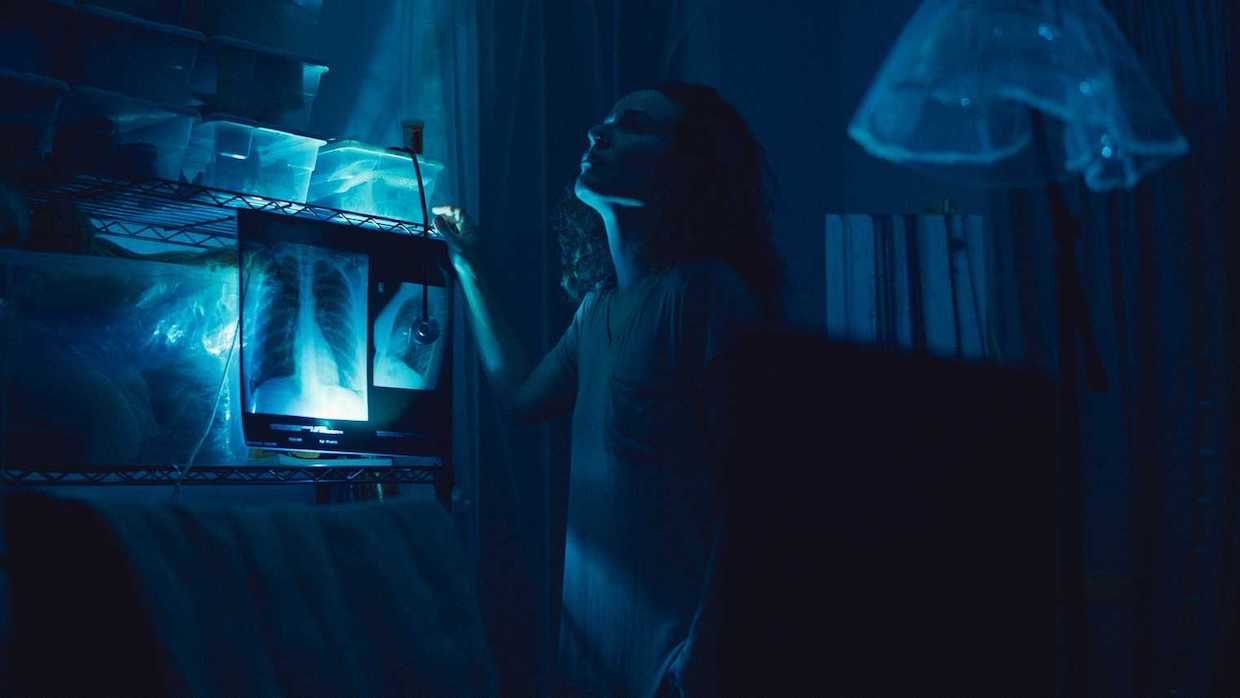 Back to selection
Back to selection
“We Had To Capture Bioluminescence on Camera in the Most Organic Way”: DP PJ López on La Pecera
 Isel Rodríguez in La Pecera
Isel Rodríguez in La Pecera In La Pecera, the feature debut from writer-director Glorimar Marrero Sánchez, Noelia (Isel Rodríguez) decides to relocate to the Puerto Rican island of Vieques where she grew up after her cancer returns. Reunited with her mother and the island’s natural beauty (and traumatic past of being a U.S. Army testing ground), Noelia refuses treatment and reflects on the root of her long-term illness.
DP PJ López discusses lensing the film, which included a difficult night shoot that captured bioluminescence on camera.
See all responses to our annual Sundance cinematographer interviews here.
Filmmaker: How and why did you wind up being the cinematographer of your film? What were the factors and attributes that led to your being hired for this job?
López: First of all, for La Pecera (The Fishbowl) I received the approach from executive producer Maite Rivera Carbonell, who is a colleague and a friend who I have had the opportunity to work with over the years in several films. She brought my name to the table and to the attention of the director Glorimar Marrero.
Filmmaker: What were your artistic goals on this film, and how did you realize them? How did you want your cinematography to enhance the film’s storytelling and treatment of its characters?
López: La Pecera (The Fishbowl) has a simple narrative line so that all the attention will be focused on the characters and their stories. We decided to make the film hand held to create an experience closer to reality for the audience, in a kind of documentary style. In the same way, the locations and shooting times were chosen in favor of lighting, mainly natural light. This way, the image was less affected in an artificial way.
Filmmaker: What were the biggest challenges posed by production to those goals?
López: I think one of the most challenging moments in the production was our shooting in the Bioluminescent Bay of Vieques. We had to work with natural light in a night space, as it is a protected environment. and also, because we had to capture bioluminescence on camera in the most organic way. A combination of no lights at all and night time.
Filmmaker: What camera did you shoot on? Why did you choose the camera that you did? What lenses did you use?
López: We needed to have a compact camera with the best resolution possible, because we had to move fast on our shooting days. The movie was done on a 17 day schedule and also we were most of the time using the camera handheld. So we choose the Alexa Mini LF with the Zeiss Supreme Radiance lenses.
Filmmaker: Describe your approach to lighting.
López: My approach was to shoot everything in the most natural light possible and capture all those reflections and glare from the sun throughout the day. It does not mean that we did not used lights on the sets, but rather that we chose the lighting selectively to keep the image as organic as possible.
Filmmaker: Finally, describe the finishing of the film. How much of your look was “baked in” versus realized in the DI?
López: As I have mentioned through the answers, in this search for naturalness in the image and the story, the decisions made both in pre-production and in the locations led us to have a very successful film. I could say that 90% of the image was baked-in on set.
TECH BOX
Film Title: La Pecera
Camera: Alexa Mini LF
Lenses: Zeiss Supreme Radiance
Lighting: HMI, Arri Skypanels, Tungsten and Astera lights
Processing: ACES and DaVinci Resolve Color Grading Platform
Color Grading: Elamedia, Madrid Spain. Sandra Otero (colorist)
